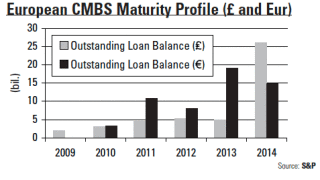-
Securitization mainstay AmeriCredit officially became GM Financial on Oct. 1, but Susan Sheffield, executive v.p., says the Fort Worth, Texas-based company's reliance on asset-backed security funding will remain steady.
-
Collateralized loan obligations have weathered stormy market conditions remarkably well over the past couple of years.
-
Stefano Sola, cio at JG Wentworth, a Bryn Mawr, Pa.-based firm that has issued about $2.5 billion in asset-backed securities, talked with reporter Amelia Granger about the sponsor's latest securitization, a $115 million deal backed by a pool of lump sum legal settlements and insurance company annuities. Sola discussed the timing of the launch, investor appetite returning to the asset class and the firm's plans to return to regular, quarterly issuances. Here's the rest of the conversation:
-
While the worst of the economic and financial risks that have plagued securitization markets for the past three years may have moved to the rear-view mirror, we haven't completely outrun them, yet.
-
President Barack Obama last week signed into law the most extensive overhaul of the U.S. financial regulatory system in history.
-
Almost everyone in the market noticed the flurry of activity in new issue commercial mortgage-backed securities in both the U.S. and this side of the Atlantic at the end of April. In this article we consider how these new issues differ from pre-crisis CMBS, the investor appetite, the stance of the rating agencies towards such deals, and what these new issues may signal to the market.
-
The ECB has been the single most influential institution in European structured finance for the past three years.
-
How is trading CMBS today different than it was five years ago? There is significantly more price volatility today. A big part relates to the market meltdown and the anxious disposition of investors postmarket meltdown. In general, there is less overall confidence, which leads investors to want to shoot first and ask questions later. That is not only true for CMBS, but practically all financial markets.
-
The July 2009 Edition of the Securitisation & Structured Capital Markets Newsletter contained an article reviewing the gradual tightening of the eligibility criteria for the European Central Bank's asset repurchase facility, which allows asset-backed securities to be used as collateral for funding.
© 2025 GlobalCapital, Derivia Intelligence Limited, company number 15235970, 4 Bouverie Street, London, EC4Y 8AX. Part of the Delinian group. All rights reserved.
Accessibility | Terms of Use | Privacy Policy | Modern Slavery Statement | Event Participant Terms & Conditions
Cookies Settings

